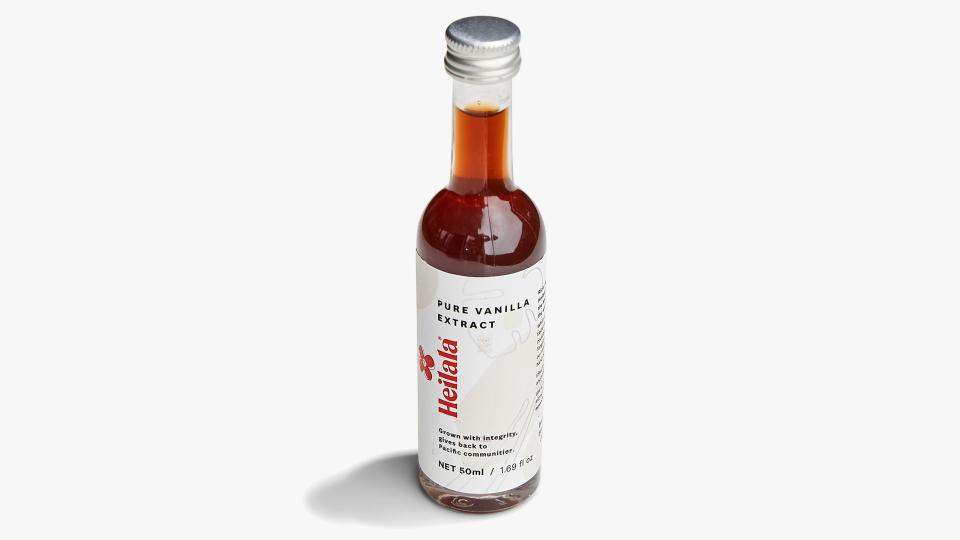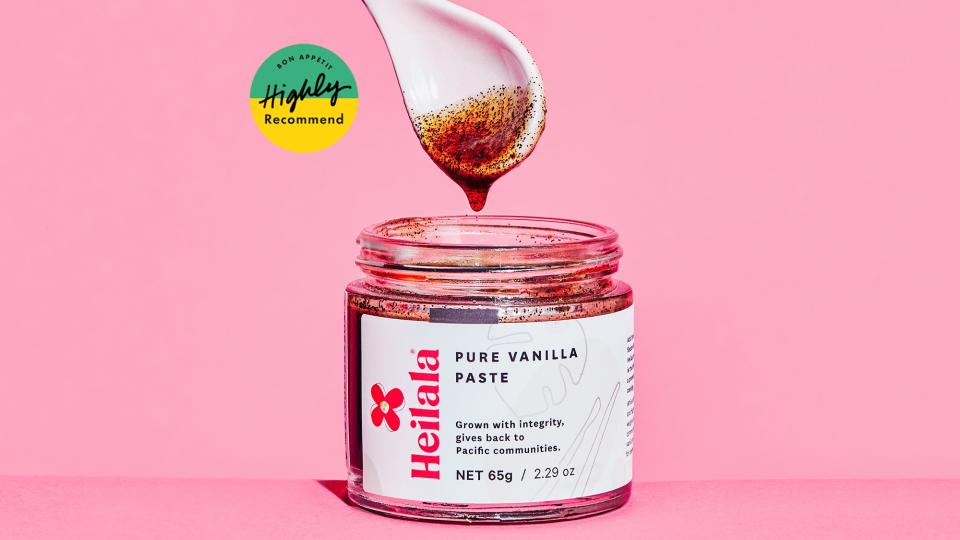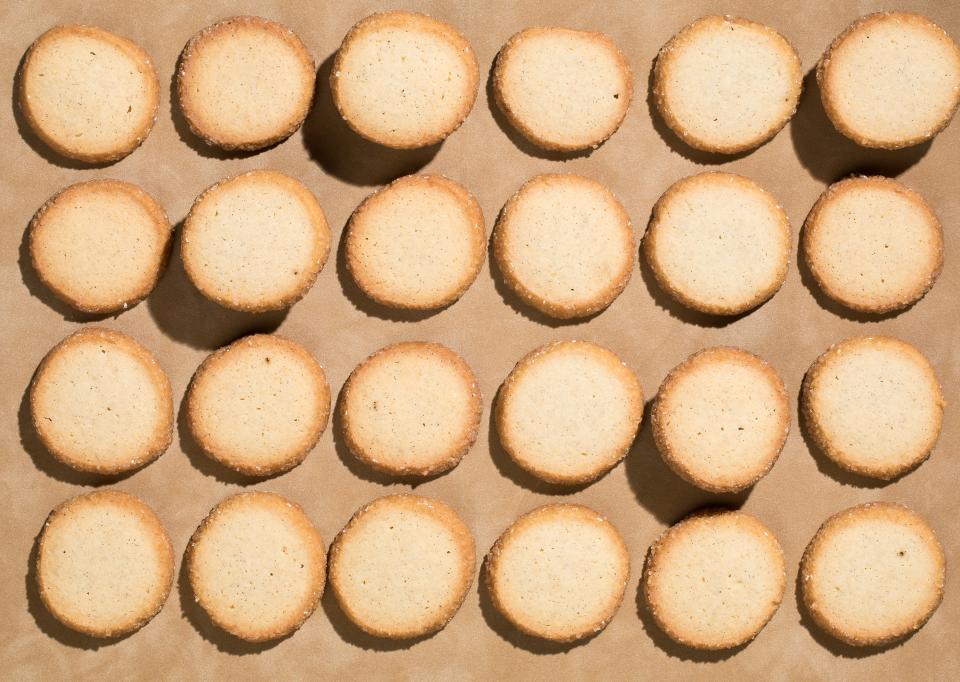What is Vanilla (And Why Is It Sooo Expensive)?
I bake a lot, which means I'm constantly measuring out 1 teaspoon of vanilla extract. You name it, I bake it. I bake it, I add vanilla to it. Chocolate chip cookies, yellow cakes, chocolate pudding, and baked oatmeal are all bound by their common ingredient: eggs! But also, vanilla!
Even though I make my way through jars of extract every year, it wasn't until recently that I paused to think, What is vanilla, anyway? (I was distracted, ok?) If you, too, have ever wondered where vanilla comes from (hint: vanilla beans aren't beans at all) or why some vanilla extracts are deemed imitators, we've got the answers for you. Let's begin:
Okay, tell me: What is vanilla?
Not a bean, that's what! A vanilla “bean” is actually the fruit of orchids in the genus Vanilla. Vanilla extract is made by soaking said beans in an alcohol solution to "extract" (get it?) all of their flavorful compounds.
And why are vanilla beans so pricey?!
Those vanilla orchids only grow in a very small subsection of the world, with Madagascar producing a whopping 80%. Plus, every step of the labor-intensive harvesting process is done by hand! For all of these reasons, the demand greatly exceeds the supply, hence vanilla's standing as the world’s second most expensive spice (around $270/lb.), behind saffron.

In that case, can I just use extract instead?
We get it. You’re tempted to swap out a pricey vanilla bean for the more economical vanilla extract. But sometimes the seeds are worth it. Here’s how to decide:
Splurge: when vanilla is the sole flavor and those signature flecks will be in the spotlight (think pudding, ice cream, crème brûlée, shortbread), buy the bean or use paste
Skip: when vanilla is a backdrop to the star elements (spice cookies, chocolate cake, fruit pie filling), go with extract
Okay, I'm ready to get some vanilla. What am I looking for?
Good-quality whole beans will be plump, shiny, and moist. Extract should contain only vanilla beans, alcohol, and water, with no added sugar or artificial colors or flavors. Our Test Kitchen loves the incredibly fragrant and responsibly-harvested products from Heilala Vanilla, which come from the Kingdom of Tonga in the South Pacific.

And how should I store vanilla so it lasts?
Wrap vanilla beans tightly in plastic wrap or reusable Bee's Wrap, then place in an airtight container and refrigerate for up to 6 months. Store extract and paste indefinitely in a cool, dark place.
What other vanilla products should I be aware of?
While extract and whole beans are among the most popular sources of vanilla flavor, they’re not the only ones out there. You're also likely to see...
Vanilla bean paste: A combination of vanilla bean seeds, extract, sugar, and natural gum thickeners. It gives you those classic speckles for a fraction of the price as the whole beans.
Vanilla powder: Dried vanilla beans ground into a fine powder. It’s less versatile than extract or paste, but good for dry mixes like homemade pancake mix or dry rubs.
Imitation vanilla extract: A trick! This is not a vanilla product. 99% of the world’s vanilla extract is fake, flavored primarily with synthetically produced vanillin (that's the main flavor compound in real vanilla). This is usually derived from, uh, less-than-organic material (like petroleum) and, while it mimics vanilla’s essence, it doesn’t come close to capturing all of its complex floral and woodsy notes.

I only have vanilla extract but the recipe calls for a vanilla bean. What's the conversion?
As a general rule of thumb, 1 Tbsp. vanilla bean paste = 1 Tbsp. pure vanilla extract =one 6-inch vanilla bean. (But check your vanilla paste bottle, as some brands may vary!)
So I got my vanilla bean. Now how can I get to its seeds?
Use a paring knife to make a slit down the pod’s length, leaving the bottom intact.
Open the sides like shutters to expose the seedy insides.
Pressing gently, drag the flat side of the knife down the pod, gathering the seeds as you go.
And what's the first thing I should make?
For a sweet and tangy topping for pie, sundaes, or mousse, scrape seeds from 1 vanilla bean into a medium bowl. Add 1 cup chilled cream, ⅓ cup sour cream, and ¼ cup sugar. Use a whisk or electric mixer to beat until soft peaks form.
What can I do with the spent pod?
That scraped-out pod still holds a ton of flavor. After you’ve used the seeds, rinse the pod, let it air dry, then try these:
Bury in a jar of sugar, for all-purpose baking...
...or of flaky salt, for finishing cookies and brownies
Add to the pot when you’re making poached fruit or a compote
Simmer with sugar and water for a flavorful simple syrup
Other than cakes and cookies, where else should I be adding vanilla extract?
A splash of vanilla extract adds caramelly richness that makes warm flavors cozier and bright flavors sharper. Start by adding a splash to...
Cold brew
Oatmeal
Biscuit dough
But wait, before you add it...
Heat dulls the flavor of vanilla extract. Add it to hot mixtures like pudding and custard after they’ve cooled slightly.
Chocolate + vanilla, a match made in heaven:
Obscenely Chocolatey Chocolate Cookies
Originally Appeared on Bon Appétit


